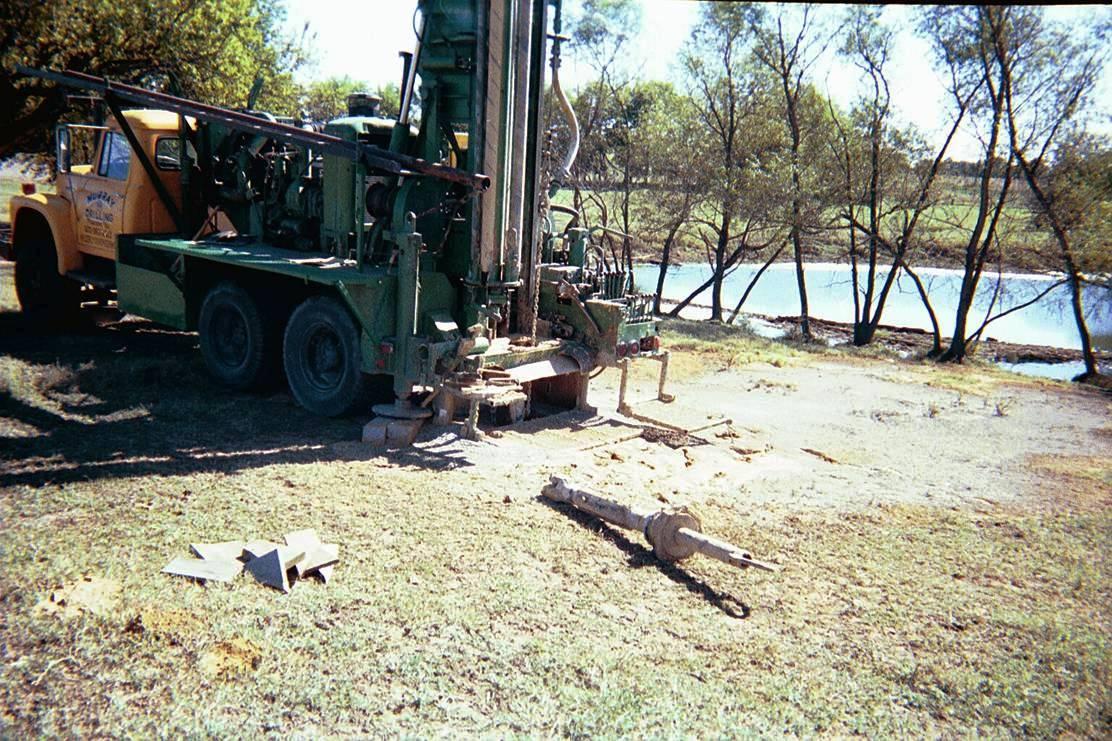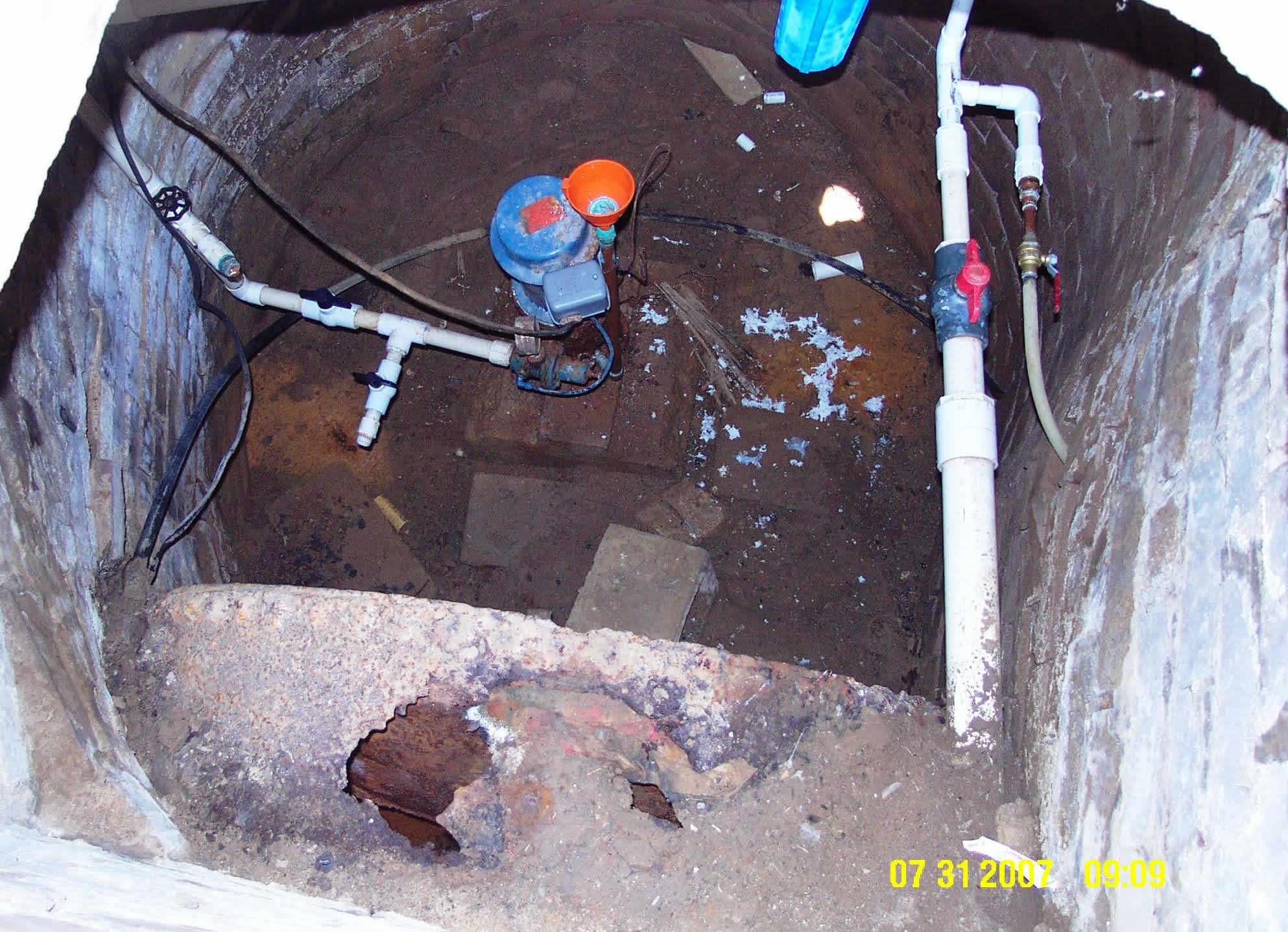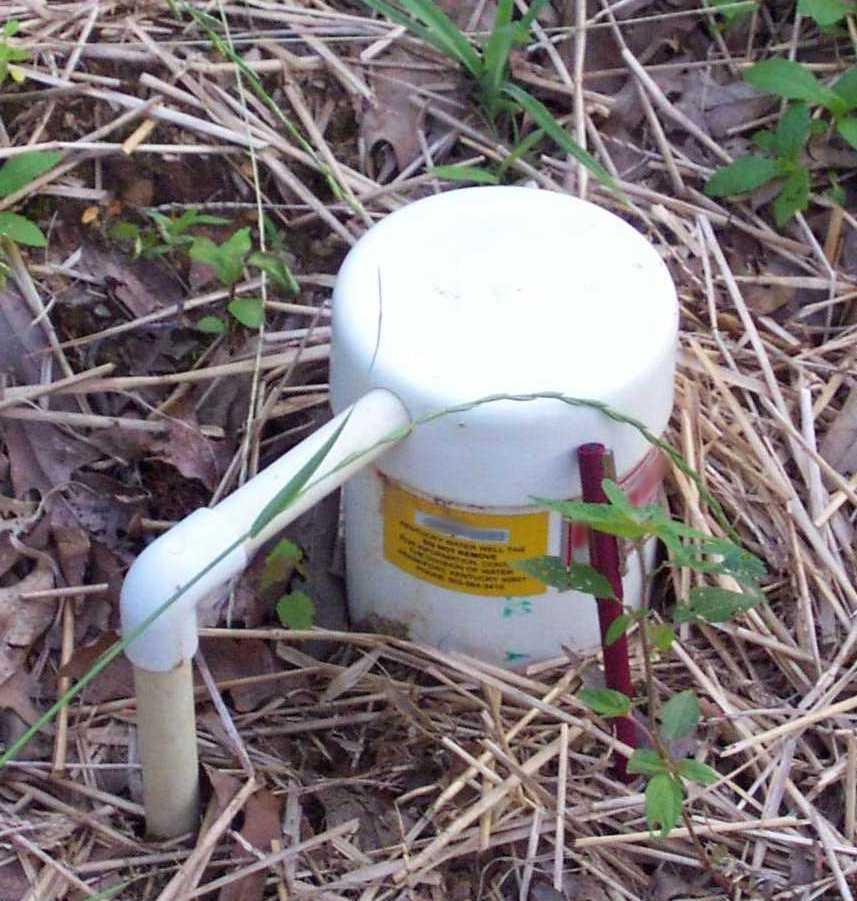Drilled Wells
Drilled wells, if constructed properly, are generally the least likely to be contaminated from surface water, and are the most common type of well installed in Kentucky. Drilled wells are used in locations where the aquifer has the ability to supply the desired amount of water needed without relying on a reservoir such as in a bored or dug well. Drilled wells can be installed in various geological materials ranging from unconsolidated sands and gravels to consolidated rocks such as limestone and sandstone. They are typically 4-8" in diameter and can range from 30 feet to over 1000 feet deep.

Image above is of an air-rotary drilling rig.
(Image courtesy Glynn Beck, Kentucky Geological Survey)
Do you know if you have a pit well or a pitless well? Pit wells were common before the advent of the pitless adaptor. Wells were installed in pits so that the water discharge pipe would not freeze in cold weather. The pit was usually dug to a depth of 2-3 feet below land surface, which in Kentucky is well below the freezing zone within the soil.

Image Above: A brick lined well pit. The pump (blue) is mounted on top of the well.
(Image courtesy Glynn Beck, Kentucky Geological Survey)

Image Above: A water well constructed with a pitless adaptor. The water discharge pipe is below ground. The small PVC pipe extending out of the top of the well casing is conduit for the electrical wiring.
(Image courtesy Glynn Beck, Kentucky Geological Survey)
Drilled Well Construction:Proper well placement and construction ensures that contaminants are not introduced to the local groundwater system. Proper well maintenance and periodic sampling will ensure that your drinking water well continues to provide safe drinking water and that your local groundwater system remains uncontaminated.
Pit Well:Pit wells are typically older, and have higher maintenance requirements than pitless wells.
Pitless Well: Pitless wells use a device called a pitless adaptor to deliver water below the frostline.
